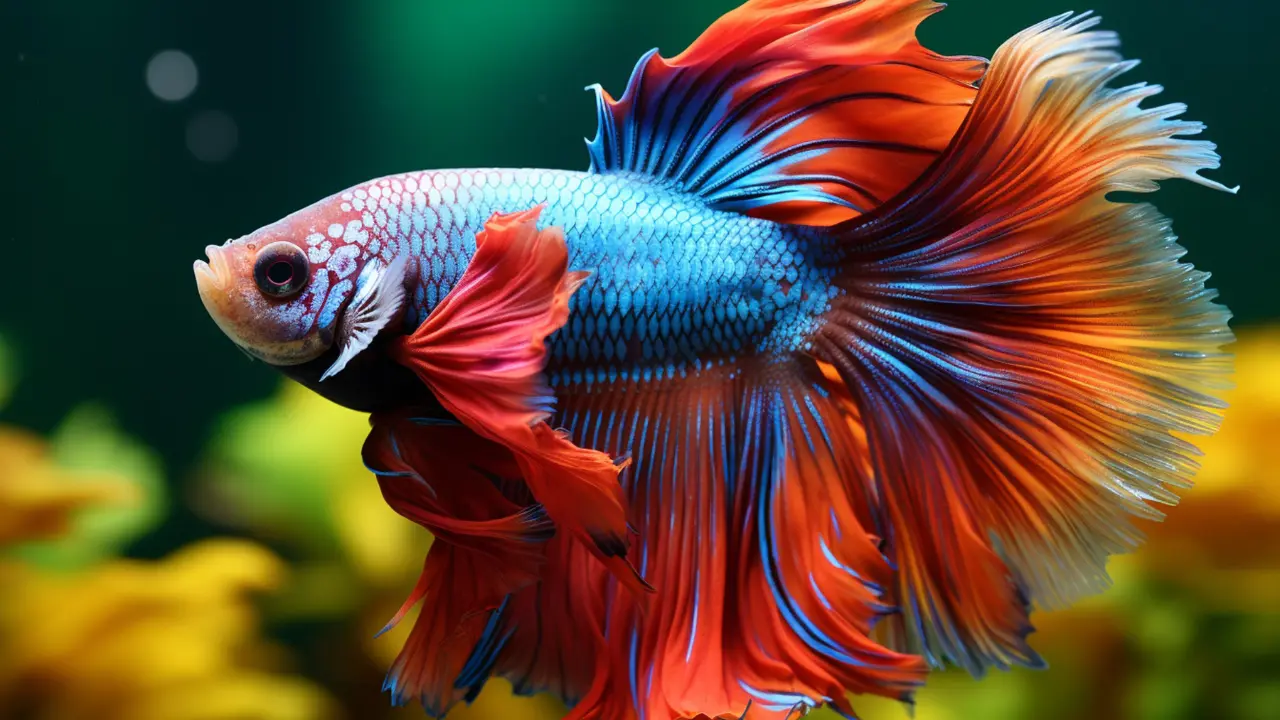The female betta fish is a marvel of the underwater world. We know how crucial it is for you to understand your cherished water jewel and all its needs. But because the male Bettas take all the spotlight, learning about the girlies can be challenging. However, you can rely on us to help you through!
Let me ask: Aside from gender, what makes the female Bettas different from the males? I’ll answer that shortly, till then here’s what we will cover today.
Today we will discuss every important fact about the Female Betta. From the female betta fish types to its breeding, let’s discover the “female’s only” Betta world. So, come along as we get into “Everything you need to know about the Female Betta”.
Here are some quick facts about the female betta fish.
| Species Name | Betta Spiendens |
| Family | Guarami |
| Required Temperature | 75 to 80 degrees Fahrenheit |
| Behave and Temperament | Non-aggressive |
| Total Lifespan | 5 years |
| Overall Size | 2.25” to 2.5” |
| Feed | Carnivorous |
| Minimum Tank Size | 5 to 10 gallons |
| Tank Set-Up | Warm with gentle water currents |
For a more detailed insight on the female Betta fish check out the article below.
What is Female Betta fish?
Betta fish are vibrant fish with dazzling bodies that belong to the Gourami family. The females of this species have subdued colors and shorter fins as compared to the males. Moreover, the females have peaceful temperaments while the males are pretty aggressive.
Female Bettas are the counterparts of the male Bettas although both are pretty different. In terms of behavior, appearance, and social lives, the males and females have a clear gap. To find out more about these distinctions, read the following article.

Female Betta Fish Origin
The female Betta fish is native to Asia’s freshwaters. It is specifically found in Malaysia, Indonesia, Thailand, Vietnam, Laos, Myanmar, and Cambodia.
This fish is significant to the Southeast and has a long history. The origin of betta fish has deep roots in Vietnamese culture and history.

In Thai, it is widely referred to as “Pla-Kad.” The Thai people bred this fish because of its aggressive temperament. Then they arranged its fights for entertainment. However, this fact is only true for the male counterparts.
The females are mostly peaceful and have a calm temperament. Unlike the feisty males, the female Betta is popular as a peaceful aquarium fish. These beauties don’t add much aggression to the tank and rather contribute as colorful betta fish with a calm vibe. Moreover, selective breeding of the Betta produces a range of colors to choose from. So, if you are looking for an intriguing addition to the tank, I think you’ve found your dream girl! I mean fish.
Female Betta Natural Habitat
Female Betta fish hails from shallow, slow-moving waters throughout Southeast Asia. Its natural habitats include rice paddies, shallow ponds, and slow-moving streams. Most of the time, Bettas are found in densely vegetated waters. This vegetation provides shelter and food for the Bettas.
Female Bettas thrive in tropical warm waters with temperatures between 75-80 degrees Fahrenheit. The water is clean but has poor oxygen levels. However, this isn’t an issue for the Betta. Bettas have labyrinth organs that allow them to breathe straight from the surface. So, confined and small spaces are no issue for this little fish.
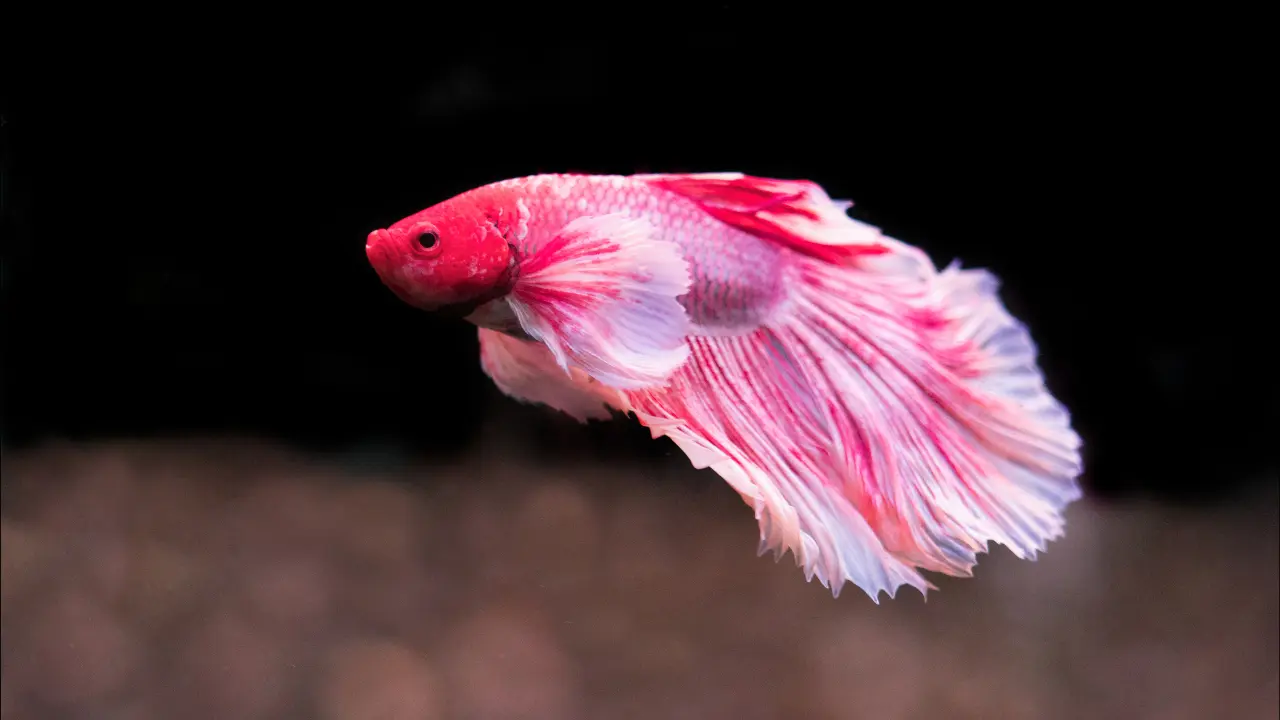
Female Betta Fish Appearance
Betta fish have an appearance like no other fish in the sea. The variety of colors and looks that the Betta offers is extremely diverse. However, the female Bettas have subdued colors as compared to males. The Female betta fish are also slightly smaller than the males, no matter what type.
Typically the female Betta fish colors are less vibrant than the males and they also have shorter fins. However, they have intricate patterns on their bodies that compensate for the color factor. Commonly the female Bettas have pale blue, green, and red, bodies. These beauties are also adorned with horizontal stripes or spots along their bodies. All these patterns aren’t just for show, they also work as camouflage to escape predators.

If we compare the male and female Bettas, the females have round bodies and shorter fins. The female Betta fins also lack the flowing extensions that are visible in males. Their fins are primarily rounded, lacking the long, flowing extensions seen in males. Although the females are less flashy, they are equally fascinating.
Female Betta Fish Behavior
Female Betta fish behave very differently as compared to the males. Generally, the females have a calm temperament while the males are aggressive. Female betta fish can even coexist with the same or different species of fish.
As discussed above, the males are more vibrant than females. This male handsomeness isn’t just for show, rather it’s used for attracting mates for breeding. Moreover, the males are more active while breeding as compared to the females. They make bubble nests for the fertilized eggs to develop into fry and in some cases guard them as well. However, the mamas don’t really mind caring for the eggs, now it’s up to the Betta dad.

In addition, the male Betta uses its finnage to show dominance in the tank and protect its territory. On the other hand, female bettas don’t mind being dominated or having company.
Overall, the Betta fish like solitary life, ideally in habitats with low competition for food and survival. It’s best to keep this intriguing fish in a separate tank so the spotlight is always focused on them. However, shared tanks are not a bad option.
Female Betta Types
As discussed above, this fish has a lot of diversity. For instance, common types of female Bettas include the Veil Tail, Crown Tail, Half Moon, and Plakat. Each of these types has different finnage and coloration.
In terms of size, the female Betta is always smaller than their male counterparts. The regular size of a female Betta is about 2 to 2.5 inches while a giant betta can have a size of 2.5 to 3 inches.
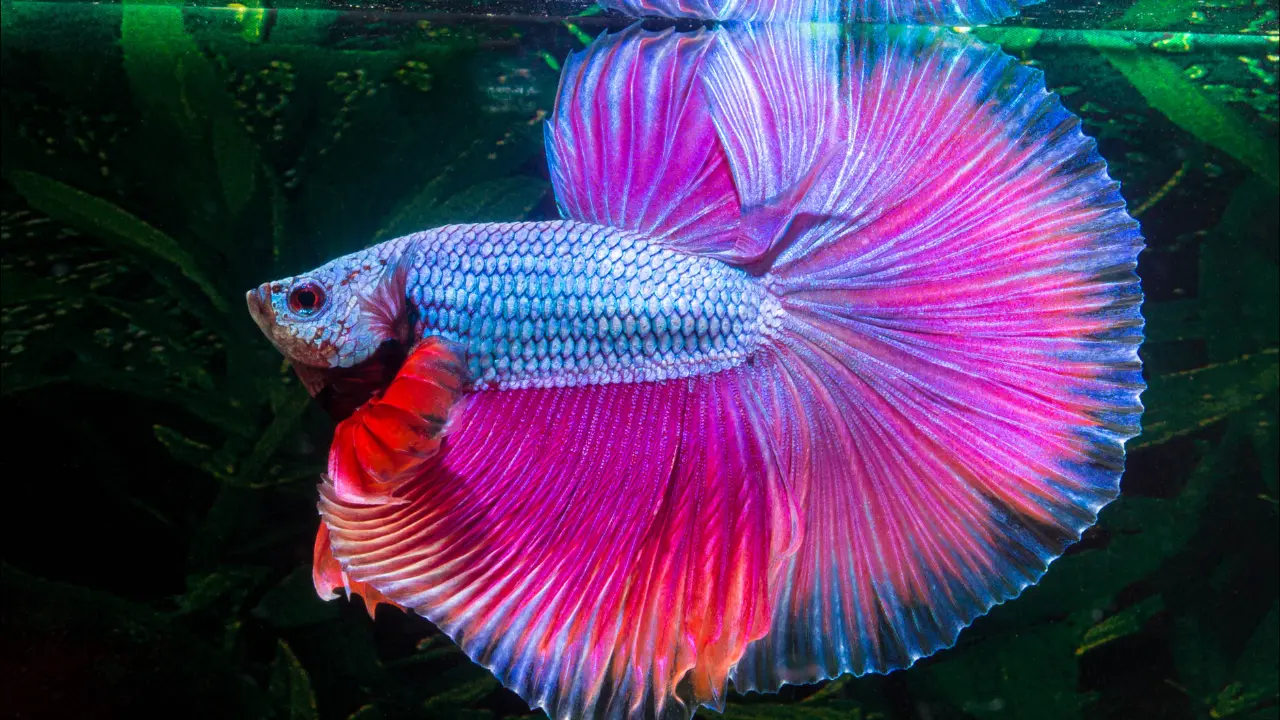
Additionally, here are some Female Betta varieties
- Wild Female Betta: These resemble wild Betta splendens the most in appearance.
- Female Veiltail Betta: This Beta has a tail that resembles a long gown.
- Crowntail Female Betta: Female crown tails have intricate fins that resemble a queen’s crown.
- Halfmoon Female Betta: These Bettas have Half-D-shaped fins when fully extended.
- Betta Doubletail Female: Due to genetics, this betta has two separate tails rather than one.
- Female Plakat Betta: This Betta has shorter fins as compared to other Bettas.
Female Betta Care Guide
This fish requires attention and proper conditions to thrive in captivity. Follow the Female Betta Care Guide given below to make sure your Betta flourishes in your fish tank.
Tank Set Up
The Betta fish enjoy showing off how beautiful they are to everyone in the fish tank. A betta fish needs at least a 5-gallon tank to survive, but we recommend having an aquarium with at least 10 gallons.

Adding a tankmate requires expanding the tank’s capacity. Increase the tank capacity by one gallon if you intend to add a new tankmate that is longer than an inch. The betta fish needs a large area to swim in all situations. So, it’s best to have a longer tank than a taller one.
Water Parameters
It is very important to have ideal and controlled tank conditions. So, it’s better to invest in a high-quality water heater and filter. Ideally, the water temperature must be between 75 to 80 degrees Fahrenheit, mimicking the Betta’s natural habitat. Ideally, the tank pH must be between 6.5 and 8. Betta fish is highly sensitive to pH and temperature variations so avoid any fluctuations.
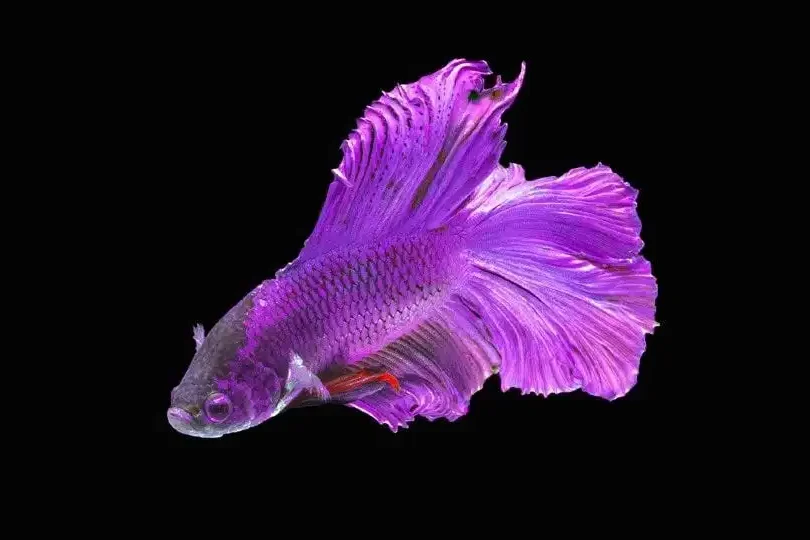
Moreover, it is necessary to replace the tank’s water regularly. we advise doing so at least once every week. It is necessary to refill at least one-third of the water. However, make sure you don’t change all the water at once, this could shock the Betta fish.
Tank Decoration and Substrate
To decorate the female betta’s tank go for soft, smooth decorations. Avoid any sharp objects that could damage the Betta’s delicate fins. Mimic the natural habitat of the Betta to get the best tank decoration for your tiny fishy.
There should be a lot of plants and hiding spots in the tank. The tank should look like the bettas natural home which is densely vegetated. You can use plants like Hornwort, Cryptocoryne (Crypt), Water Wisteria, and Water Lily. It’s okay to use artificial plants but it’s better to use real ones. Real plants keep the water clean and filtered although the fish might take a bite out of its leaves!
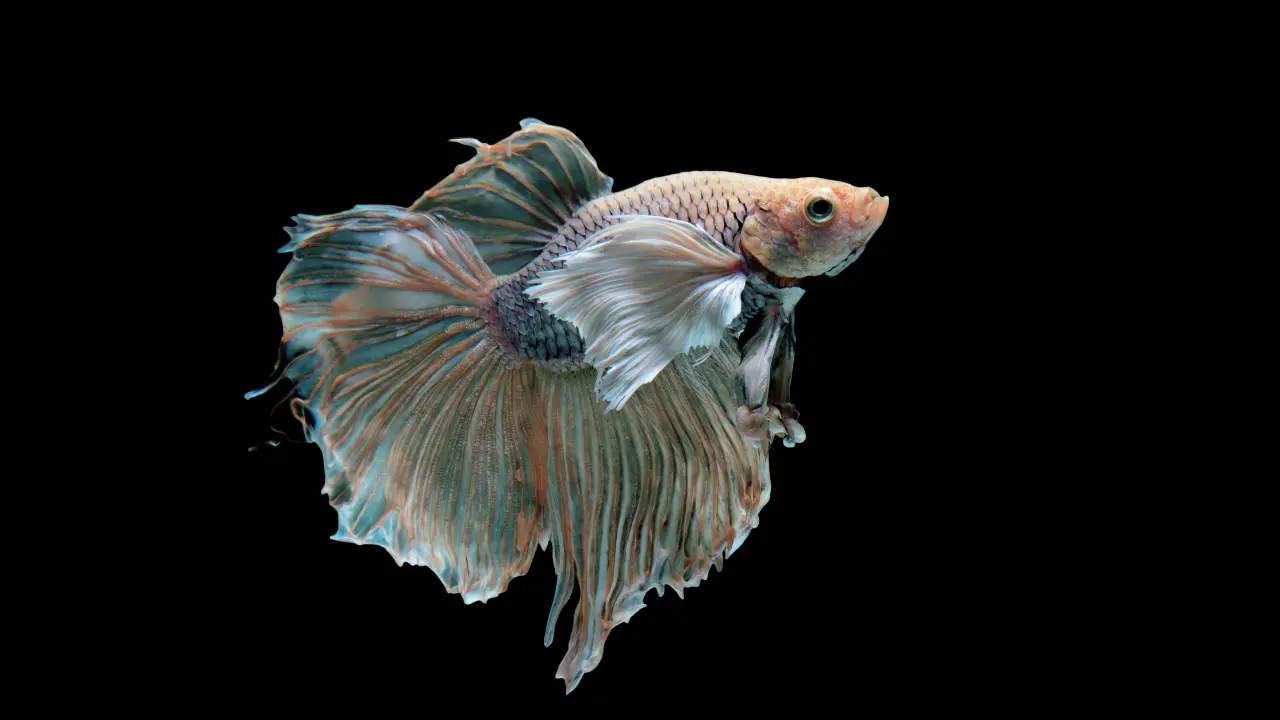
For substrate, always use fine gravel or sand. This will provide a soft tank bottom without any hard or sharp objects. Remember, the Betta fish are very intricate and get hurt easily. The tank substrate should be 1 to 2 inches deep. This depth is ideal for the fish and cleaning. Additionally, go for a darker substrate color and it brings out the Bettas vibrance.
In essence, never add anything to the tank that might tear or snag the Female betta fins. Choose live plants over plastic ones because they are more beneficial. Moreover, create a diverse landscape in the tank as this fishy likes to explore its home.
Female Betta Sorority Tank
A Betta sorority is a tank setup where multiple female Betta fish coexist. Male Bettas are known for their aggression, although female Bettas are very peaceful. Due to this calm temperament, you can add multiple Female Bettas in one tank and see them thrive as a community. This diverse and colorful tank adds a vibrant pop to any space.
The Betta sorority is a very intriguing aquarium although it is pretty demanding. For starters, you should have a big tank to accommodate multiple Bettas. A 20-gallon tank will do however it’s better to get a bigger one. We suggest having 5 to 7 fish in one Betta sorority as it allows them to socialize and have some space as well.

It’s essential to add all the Bettas in the sorority tank together. Newcomers aren’t really welcome in the tank once the sorority is set. The female Bettas are calm but they ain’t no monks! So, one fish might attempt to dominate the tank. However, this is not common. You should use some plants as dividers to make break points in the tank. These breakpoints could be used for hiding or retreating in case of any aggression.
Despite their peaceful nature, female Bettas might not get along. Just like humans, each individual has a mind of her own. In some cases, it’s better to remove the Betta that isn’t adjusting in the tank.
Breeding Betta Fish
Breeding Betta fish is not “child play”, It requires experience, practice, and luck. Moreover, this procedure is very aggressive. There is a lot of hide-and-seek and nibbling. This is the mating dance of the Betta fish. However, it can be fighting, which could injure the fish and even contaminate the tank. Pretty confusing right?
Sometimes it is difficult to tell if the fish are fighting or mating so make sure you know what you are doing. Still, here are some guidelines to follow if you want to give it a shot.
- Provide a separate mating tank without any substrate. This will prevent the eggs from mixing with the substrate.
- Maintain extremely little water flow and perfect water conditions.
- To get a lukewarm temperature, add a heater to the tank.
- Create hiding spots for the fish in the water by adding an appropriate amount of moss.
- Add some Indian almond leaves to enable the male to construct a bubble nest.
- place a see-through divider in the tank. The fish should be on either side of the divider. They must be able to see each other but without physically interacting.

Once everything is set as mentioned above place the fish in the tank, one on both sides. The male and female must first be able to see one another. The male will glow if he is interested, and the female will darken her colors if she feels the same. The pair is incompatible if this isn’t the case.
If they are compatible, the male will build a bubble nest. After that, you can carefully take out the divider to allow the fish to interact. Be aware that there may be a lot of hiding and attacking, but all of this is normal during the “mating dance.” After some time the female will lay its eggs and the male will fertilize them.
Lastly, the male will carry the eggs to the bubble nest. The eggs will attach to the bubble nest as they are sticky. Until the eggs hatch, he will watch over them. The male will maintain his guard after the fry hatches to allow them to swim freely. He may choose the fry that are falling and help them swim at first. Remember that this is the perfect scenario.
In certain cases, the male may eat the unfertilized eggs. Moreover, the mating dance might stop out of nowhere if any partner isn’t interested anymore. So don’t be hard on yourself if things don’t go as planned.
Female Betta Fish Diet
Male and Female Bettas are carnivores as a large portion of their diet consists of meaty foods. Tiny fish, bloodworms, shrimp, and high-protein insects make their primary diet. They do occasionally graze on vegetation.
The market offers a wide range of betta feeds, including pallets, frozen, dried, and live flakes. It’s best to use a mix of multiple foods. You should try experimenting with several combinations to figure out your Bettas favorite.

How Often to Feed Female Betta Fish?
For a betta, four pallets a day, or two pallets twice a day, is the optimal amount of nourishment. Even so, alternative diets in comparable proportions might also be offered. Make sure they eat at least one high-protein food every day.
Interestingly, Bettas can survive without food for a few days. Although we advise feeding them regularly, it’s okay if you skip a day or two. Check out How long can a Female Betta Fish Survive without food.
Common Diseases in Female Betta Fish
Ich (White Spot Disease)
The Ich is a dangerous and contagious disease. This parasitic infection is common in Betta fish and is well-known for destroying their appearance. This disease causes tiny white patches on Bettas’ fins, gills, and bodies. Despite appearing harmless, these little white dots are contagious.
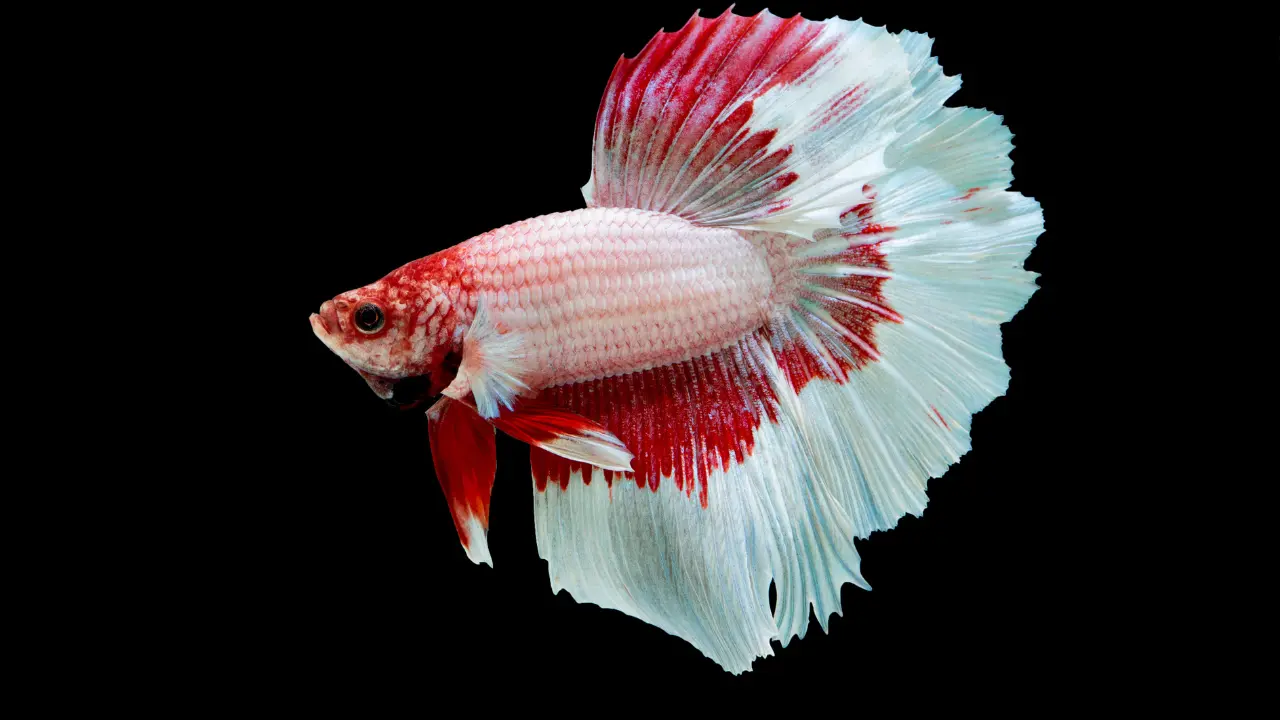
Infected Betta may rub itself on objects, lose appetite, and breathe quickly. Betta fin shortening and color loss are other signs. The Ich causes the Betta’s immune system to weaken, which makes them more prone to other diseases.
Additionally, the fish may appear weak and inactive. It’s best to detect this condition early and cure the fish immediately. The Beautiful Betta suffers mentally and physically from this condition. Thus, it’s best to take preventive steps to keep Ich out of the Tank.
Fin Rot
This bacterial infection rips your Betta’s fins apart and leaves them ragged and shortened. The beautiful Betta fins shorten, lose their color, and become dull.

In general, Lack of clean water causes fin rot, moreover, stress and shock intensify it. Additionally, Tankmates nibbling on fins can cause fin rot.
Dirty water weakens the Betta’s immune, making it susceptible to sickness. When the defenses are weak, bacteria consume the lovely fins.
Thankfully, this condition is treatable. Clean your fish tank to improve water quality. We propose a salt bath for Koi Betta. If things go wrong, employ TLC. Care for your tank and the fins will be like new in a week or two.
Velvet Disease
A thin golden or gold dust-like parasite in the tank causes the velvet disease. These parasites cover the fish’s skin and form a golden sheen covering. The common symptoms include Lethargy, appetite loss, and the fish rubbing itself objects. This illness spreads quickly and is highly contagious.
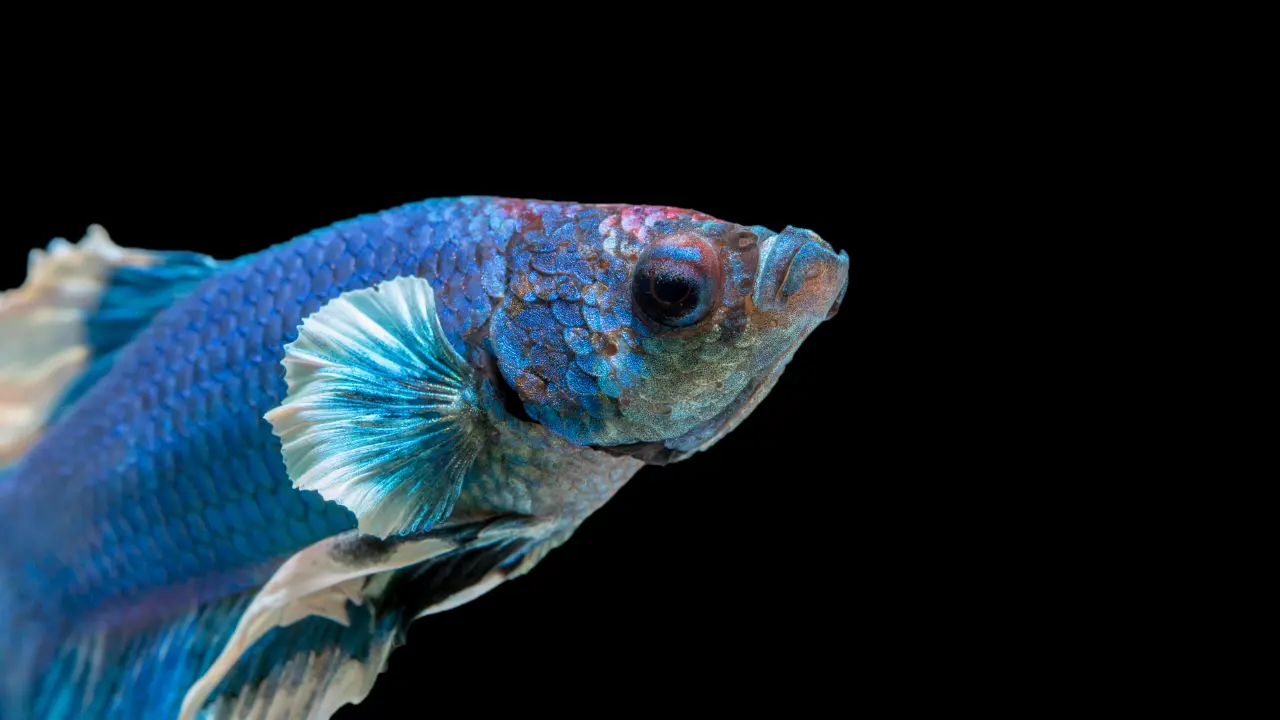
Isolating affected Betta protects other tankmates from this illness. As heat makes parasites susceptible, raise the tank temperature slightly. Also, subdue the tank light because parasites need light to thrive. Clean the tank and replace the water periodically.
FAQ’s
Are Female Betta Fish Peaceful?
Yes, Unlike the male Bettas, the female Betta fish has a calm nature and peaceful temperament. This specialty makes it an ideal community fish.
Is It Normal When My Female Betta Start Chasing Each Other?
Yes, it is completely normal for the Bettas to play tag although sometimes this could be aggression. In such a scenario, it’s best to separate the fish immediately.
Are Female Betta Fish Friendly Tankmates?
Yes, the female Betta fish are very peaceful and ideal tankmates for most fishes. However, it’s best to do your research to check if the tankmates are compatible or not.
How Can I Tell My Betta is Boy or Girl?
There are many differences between a male and a female Betta fish. In general, the males have longer bodies and fins with more striking colors. In contrast, the females have smaller and more rounded bodies with subdued colors. You can also guess the gender by their behavior. Mostly the females are calm and peaceful while the males tend to be aggressive and territorial.
Conclusion
Today we discussed everything about the Female Betta fish. We also explored why this fish is an Aquarist favorite. Unlike their male counterparts, female Bettas tend to exhibit less aggression, making them suitable candidates for community tanks when paired with compatible tank mates.
As pretty as they look, it’s really important to fulfill their demands. Providing them with adequate space, hiding spots proper tank decor, and diet is necessary.
All in all, female Betta fish is a combination of beauty, tranquility, and intrigue. This fish is a must-have in many tanks because it is calm and looks great. This fish is fun and interesting to have in your tank, whether you are an expert or just an amateur.
So, tell us what you think about the Female Betta Fish in the comments below!

